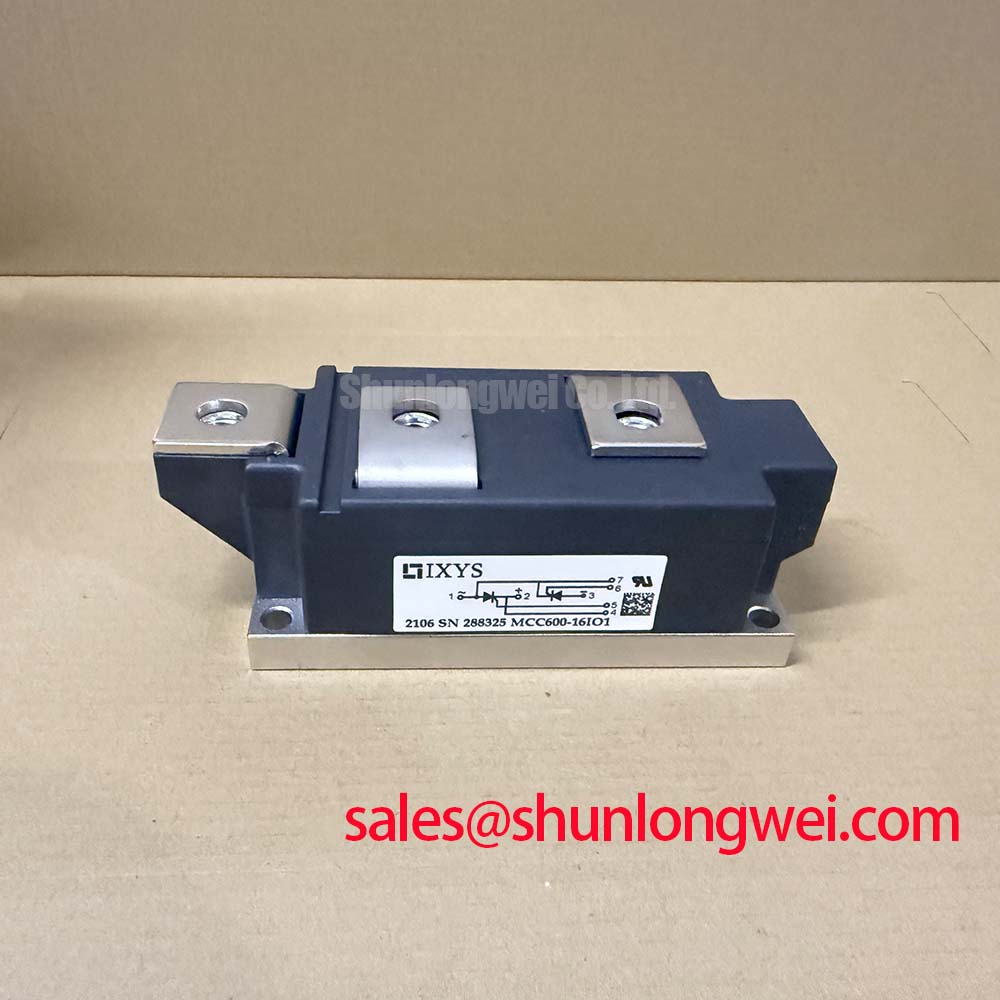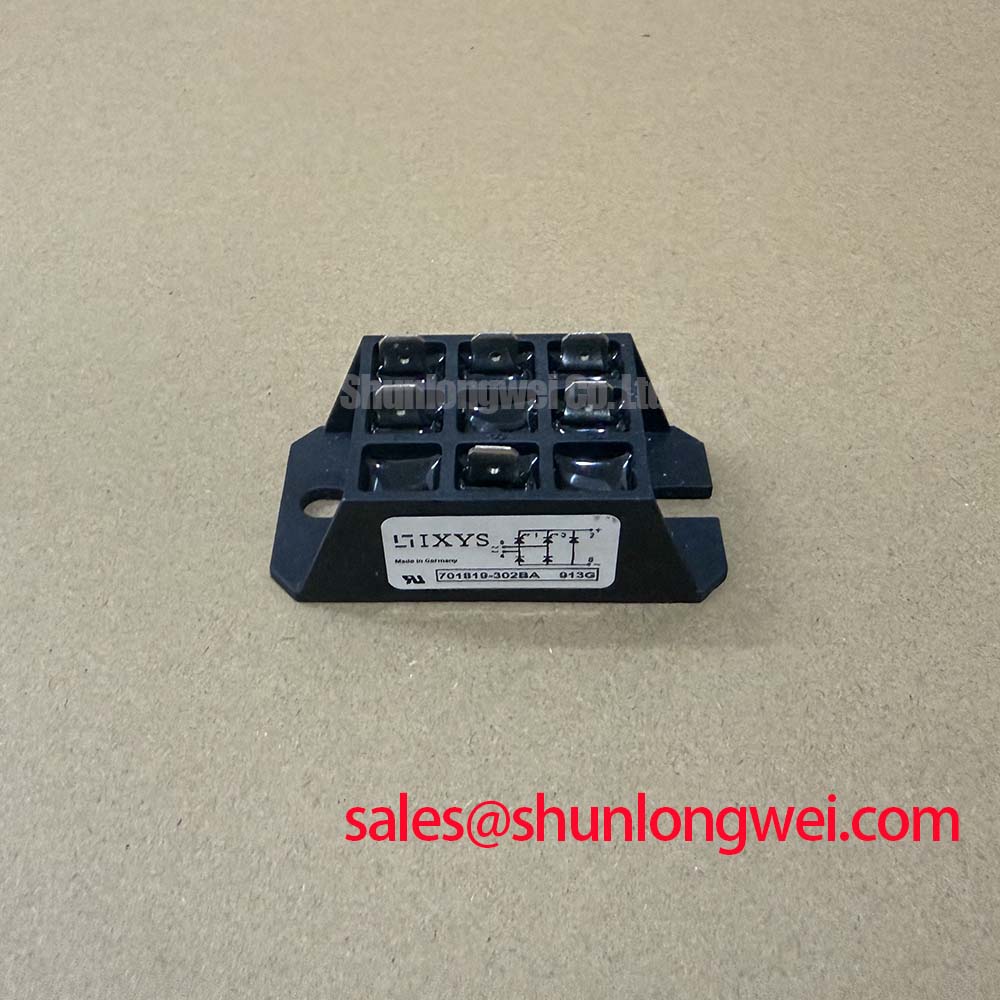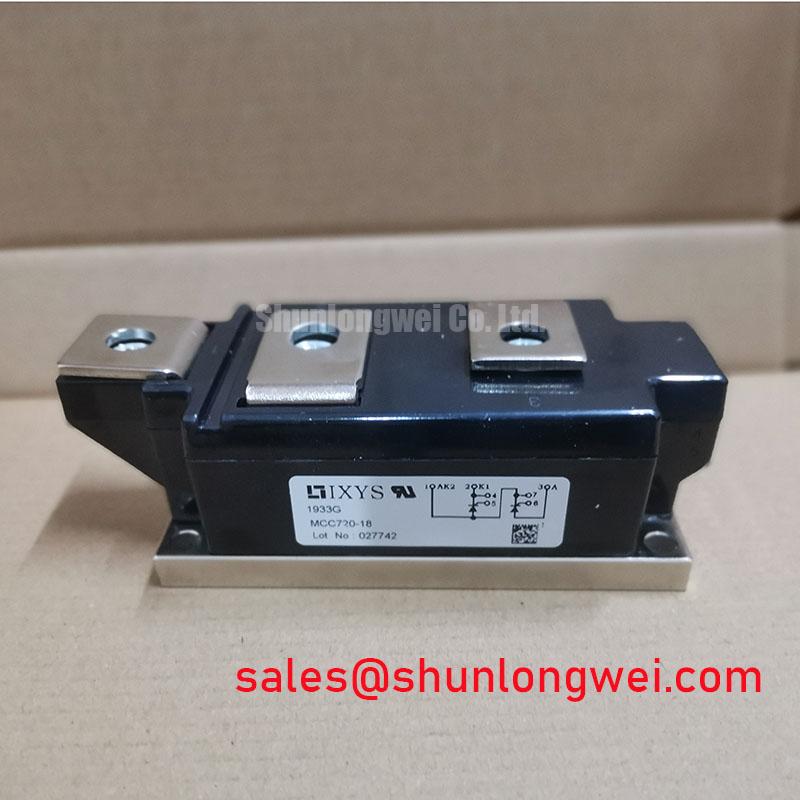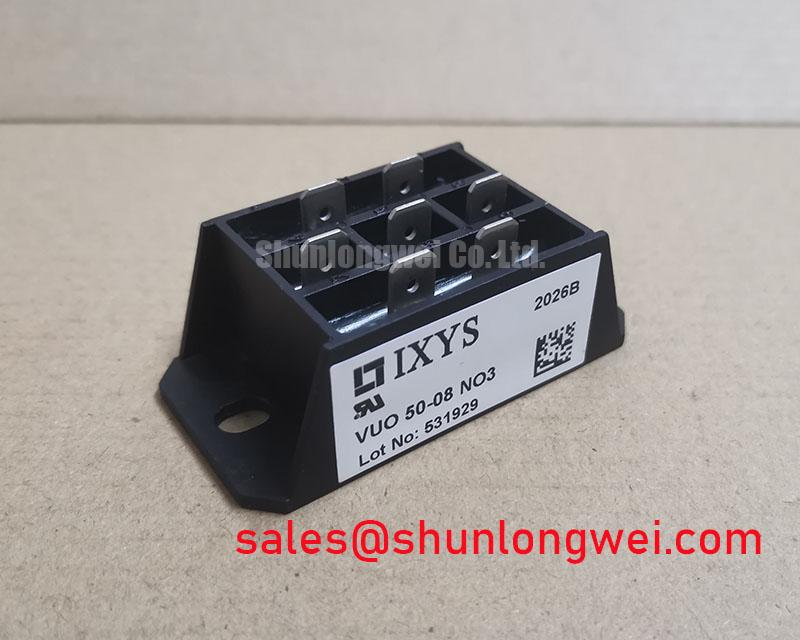MCC600-16IO1 Thyristor Module: Datasheet & Tech Insights
The Littelfuse MCC600-16IO1 Thyristor Module leverages a pressure-contact system to deliver exceptional operational longevity in high-stress power control systems. With its core specifications of 1600V | 610A | Rth(j-c) 0.055 K/W, this component provides two key engineering benefits: superior thermal cycling endurance and simplified thermal design. Its construction directly addresses the primary failure mode in conventional modules—solder fatigue—by creating a robust, solder-free interface between the silicon die and its contacts, ensuring predictable performance over an extended lifecycle.
Technical Inquiries for the MCC600-16IO1
-
What is the primary advantage of the pressure contact technology used in the Littelfuse MCC600-16IO1?
The main advantage is significantly enhanced long-term reliability. By eliminating solder layers, which are prone to fatigue and cracking after repeated temperature fluctuations, the pressure contact design prevents a common point of failure. This results in a longer operational life and greater system uptime, especially in applications like motor soft-starters or phase controllers with frequent on/off cycles.
-
How does the 1600V rating of this module benefit systems operating on 600V or 690V AC lines?
A 1600V blocking voltage (V_DRM/V_RRM) provides a substantial safety margin for industrial systems connected to 600V or 690V nominal AC lines. This high rating protects the device against transient overvoltages and line disturbances common in industrial environments, contributing to a more robust and fault-tolerant end-product design.
-
During installation, what is the critical parameter to ensure correct performance?
The mounting force is critical. The datasheet specifies a required mounting force (typically in kilonewtons) to ensure proper electrical and thermal contact. Insufficient force can lead to high thermal resistance and potential overheating, while excessive force can damage the module. Adhering to the specified clamping force is essential for achieving the rated performance and reliability.
-
Can the MCC600-16IO1 be used for high-frequency applications?
This module is designed primarily for line-frequency (50/60 Hz) applications such as AC phase control and rectification. Its turn-off time (t_q) characteristics are not optimized for high-frequency switching. For applications requiring operation in the kilohertz range, designers should evaluate components specifically engineered for faster switching, such as IGBTs or fast-recovery thyristors.
Strategic Advantages in Demanding Industrial Environments
In industries where equipment uptime directly impacts profitability and safety, component selection transcends initial cost to focus on Total Cost of Ownership (TCO). The design philosophy of the Littelfuse MCC600-16IO1 directly supports this strategic objective. Its solder-free pressure contact construction is a deliberate engineering choice aimed at mitigating the long-term risks associated with thermal fatigue. As industrial automation pushes equipment to operate under more demanding cycles, the predictable wear-out mechanisms of soldered joints become a significant liability. What is the benefit of the MCC600-16IO1's pressure contact? It ensures high reliability by eliminating solder bond fatigue failures.
This focus on intrinsic durability makes the module a key enabler for building next-generation industrial equipment aligned with Industry 4.0 principles, where predictive maintenance and operational longevity are paramount. The robust electrical isolation and efficient thermal pathways further simplify system-level design, allowing engineers to build more compact and resilient power conversion systems without compromising on safety or performance headroom. For systems that need similar reliability in a diode configuration, the MDD95-12N1B provides a complementary solution for rectifier stages.
Performance Metrics Defining Module Longevity
The following parameters, extracted from the official datasheet, are central to the MCC600-16IO1's performance in reliability-focused applications. For a comprehensive list of specifications, please download the datasheet.
| Parameter | Value |
|---|---|
| Repetitive Peak Off-State Voltage (V_DRM) | 1600 V |
| Average On-State Current (I_T(AV) @ T_C=85°C) | 610 A |
| RMS On-State Current (I_T(RMS)) | 960 A |
| Thermal Resistance, Junction to Case (R_th(j-c)) | 0.055 K/W |
| Isolation Voltage (V_ISOL) | 3000 V~ |
| Mounting Force | 18 - 22 kN |
Download the Datasheet for MCC600-16IO1
Deployment Snapshot: A Case for Solder-Free Design
Consider a large-scale industrial soft-starter for a 500kW motor operating in a metals processing plant. The motor undergoes multiple start/stop cycles per hour, subjecting the power electronics to significant thermal stress. In such a scenario, a conventionally soldered thyristor module might exhibit solder joint degradation within a few years, leading to an increase in thermal resistance, eventual overheating, and unscheduled line stoppage. By contrast, deploying the MCC600-16IO1 with its pressure contact interface eliminates this specific failure mechanism entirely. The consistent clamping force maintains a stable thermal and electrical path, ensuring the system's power stage operates reliably for its intended design life, thus minimizing maintenance interventions and maximizing production output.
Core Applications Where Uptime is Paramount
The MCC600-16IO1 is engineered for high-power, line-frequency applications where operational robustness and predictable lifetime are non-negotiable. Its thermal and mechanical design provides significant advantages in equipment expected to perform under harsh industrial conditions.
Key Deployment Areas
- Industrial Motor Control: Serves as a robust power control element in soft starters and AC motor speed controllers, where its ability to handle high inrush currents and thermal cycling is critical.
- Power Supply & Rectifier Stages: Ideal for constructing high-current controlled rectifiers for applications such as DC power supplies, battery chargers, and welding equipment.
- AC Power Controllers: Well-suited for high-power AC switches used in industrial heating, lighting control, and static VAR compensators.
For high-power AC controllers and soft starters subject to intense thermal cycling, the MCC600-16IO1's solder-free design offers the most reliable long-term performance.
Engineering Breakdown: The Pressure Contact Advantage
At the core of the Littelfuse MCC600-16IO1's design is a commitment to mechanical and thermal robustness through the use of pressure contact technology. Unlike traditional modules that rely on soldered connections to link the silicon chip to the terminals and baseplate, this module employs a precisely calibrated mounting force. This force presses the internal components together, creating direct, high-integrity electrical and thermal junctions.
The engineering significance of this approach is profound. The thermal pathway can be likened to a pipeline for heat; solder layers act as potential constrictions that can degrade over time. How does DBC substrate improve performance? It lowers thermal resistance for superior heat dissipation from the chip. By eliminating solder, the pressure contact design creates a wider, more stable pipeline, ensuring the thermal resistance (Rth) remains low and consistent throughout the module's life. This direct metallurgical bond between materials with different thermal expansion coefficients minimizes mechanical stress during temperature changes, a crucial factor detailed in guides on unlocking thermal performance.
Data-Informed Selection: MCC600-16IO1 Parameter Focus
When evaluating power modules, it is essential to look beyond primary voltage and current ratings. For a comprehensive analysis, we present a factual comparison based on key datasheet parameters. This data is intended to support your engineering evaluation process.
The MCC600-16IO1 features a common cathode configuration with two thyristors, making it suitable for building AC controllers or controlled bridge rectifiers. An alternative topology for full-wave control can be found in common anode modules. For example, systems requiring a different internal configuration or higher current capabilities might also consider devices like the MCO500-16io1, which offers a different set of parameters for evaluation. A careful review of the Safe Operating Area (SOA) curves in the respective datasheets is recommended to ensure alignment with the specific application's load profile.
The MCC600-16IO1 represents a strategic component choice for designers prioritizing long-term field reliability over minimal initial cost. By engineering out a known failure point—solder fatigue—this module provides a foundation for power systems that are not only powerful but also durable. This forward-looking approach to component design supports the broader industry trend towards more resilient and lower-maintenance industrial infrastructure, ensuring that critical systems remain operational for longer, even under the most challenging thermal conditions.














